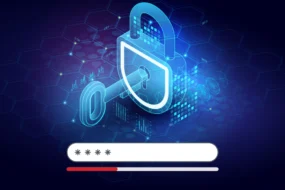You might occasionally hear people wishing they were back in the office, but for many, working from home is the new normal (and often preferable). While this might work well for employees, for employers it tends to be more of a mixed bag. On the one hand, companies can save money and increase worker engagement by offering remote work options and implementing BYOD policies, but on the other hand, BYOD is a major security risk.

To mitigate this, data discovery is essential. It can help you understand where your risks are and how to prevent sensitive information from being exposed. Compliance with data privacy regulations is becoming increasingly important, and data discovery can keep you on the right side of the laws even with a remote workforce.
BYOD and Remote Work Are Now Commonplace
Remote work was occasionally an option before 2020, but the post-pandemic workforce is increasingly working in a hybrid or remote environment. Many professionals have a stated preference for working from home, especially those who are parents or caretakers. Some companies are finding that they save money on rent or other building costs by keeping employees remote and eliminating their office space.

As companies try to lower their costs, many are also allowing employees to provide their own devices. In 2022, 92% of remote workers reported doing work on a personal tablet or smartphone. The company does not have to provide a device, and many people prefer to have fewer computers and phones cluttering their workspace at home. While it may be a logical solution for a remote workforce, BYOD has its drawbacks.
The Data Security Threats of Remote Work
BYOD creates many new attack vectors for company data. A major downside of BYOD is the lack of control IT has over the devices used to access company data. 6% of users report that the device they use for work does not have the latest operating system. Many users also download apps that aren’t pre-approved by their company’s IT department, meaning that if an app contains malware, it will affect company data as well as personal data. Additionally, 45% of users report using the same passwords for personal and work devices or accounts.

An employee who uses an IoT device at home typically has a single Wi-Fi connection that all of those usually unsecured devices connect to, which leaves any other device on the network open to attack.
When your employee logs in to access your company’s sensitive data, an attacker could easily use the wireless connection to place malware or ransomware on the employee’s device or the cloud platform that is accessed.
Many people sign in to multiple accounts with Google or Facebook, which could allow an attacker access to the employee’s email, Google Drive, and any other connected account. If your employee connects their Google account to a company platform, an attacker has an easy way into your data. If you think this is unlikely to happen, consider the 31% of users who admitted that they did not follow best security practices while working remotely.
Remote work has many advantages, but it also expands the attack surface for your organization, and it increases the likelihood that your employees will be targeted. Between 2021 and 2022, attacks on remote workers increased 38%, probably due to attackers’ assumptions that they have less stringent security.
Managing Remote Work Security Threats
Data security solutions can help organizations to maintain visibility and control over remote data. Due to increasingly strict compliance requirements, companies should ensure that they are on top of privacy protections and preventing data breaches if they want to avoid hefty fines and damaged reputations.

To do this, focus on automated monitoring and data discovery and classification. Although many users do not comply with IT directives, automated monitoring can help security teams navigate and address threats on users’ devices, even if they are not company-issued.
Monitoring your cloud data allows you to detect suspicious activity regardless of the device used to access the database, and logging credentials will tell you who logged in and when the login occurred.
Data discovery and classification locates, organizes, and labels your data so that you know exactly what is sensitive and most needs protection. Additionally, you can use data classification to determine what data each user should be permitted to access.
Not all data are required for a particular user to do his job, meaning that not everyone must be able to access your most sensitive or proprietary information. Limiting access can help you avoid insider threats, attackers piggybacking on poor security practices, and social engineering attacks.
As companies adjust to a post-pandemic remote or hybrid work environment, BYOD policies will become increasingly common.
While they can be convenient and effective for many organizations, they can also vastly expand the potential attack surface and increase the number of potential exploits for cloud data. However, by implementing effective data security measures, companies can mitigate the risks.
Explore further:









